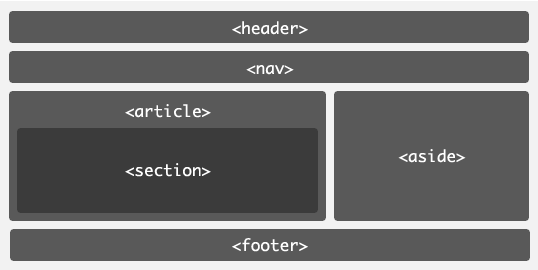HTML 5 is the next version of the “Internet Language” – HTML, which includes some semantic improvements, which, without any doubt will affect the way of Search Engine Optimisation. These are the new tags <header>, <nav>, <article>, <section>, <aside> and <footer>, which will affect the on-page SEO.
All of this is already in use by some websites, which use precursory version of HTML 5. It is officially stated by Google that they do not use this information at that very moment, but their own algorithms. Of course one day, all this information will be taken into consideration by the Search engines.
The new tags:
HTML5 <header>
It will contain the upper part of the page with a h1 tag in it, which has to contain a proper title for that page. May be you already guessed that outbound links from this tag will be very important.
HTML5 <nav>
By definition this tag should contain the website`s navigation. Combined with micro formats and HTML sitemap, this tag will allow every search engine, to know where to start website`s indexing and crawling. Not all links and navigation menus should be in <nav> tag, but only the main menu.
HTML5 <article>
The website content (what the search engines really love) will be in this tag. For example if we are reading a blog publication, its title and text will be in this tag. If we have a forum thread, each publication will be in a separate <article> tag. By definition it contains independent extract from the content.
This way, each system will know the exact place of a certain text on a certain page. The out bound links from this tag will have the greatest importance and weight. Everything in this tag will be of primary importance, because unlike the other page parts, in this tag the unique content is guaranteed.
HTML5 <section>
This tag allows insertion of semantic structures into already existing elements. For example tags like <header>, <article> и and <footer> may be included again and a new structure can be made. It is not clear how this tag will affect SEO.
HTML5 <aside>
This tag contains the page`s sidebar. These are different widgets, which inform the visitor on different aspects. Inbound links from this section will be important, but not as much as that from <nav>. Outbound links from this section will not be so important.
HTML5 <footer>
This tag will contain information about the page`s author, the copyright and links towards similar publications. Outbound links from this section will have almost no importance. The text, as well as everything outside the <article> tag, will most probably not be taken into consideration when generating snippet by the Search Engines.
Example Structure:
<body>
<header>...</header>
<nav>...</nav>
<article>
<section>
...
</section>
</article>
<aside>...</aside>
<footer>...</footer>
</body>
It is impossible to point out all aspects of the new HTML specification in just one article. In this article we emphasized on the semantic part, because this is what will directly affect the SEO. Another thing that will affect the SEO process is the new tag, which will replace Flash
Tags: E-commerce Development, html 5, html 5 tags, search engine optimisation, seo, Web Design and Development Company, Web Design and Development London, web design london, web development london

I enjoy all the comments here….
i’m pondering about beginning my own blog. i’m asking yourself if it is hard to operate your own blog. I certainly enjoy commenting. many thanks Bloggers….
If you need a legal advice from a professional lawyer, we can help you
100% natural, hand-made scented candles
The best choice for your aromatherapy at home!
Criminal Solicitor
[…]He who smiles in a crisis has found someone to blame.[…]…
This is my Excerpt…
I saw this really good post today….